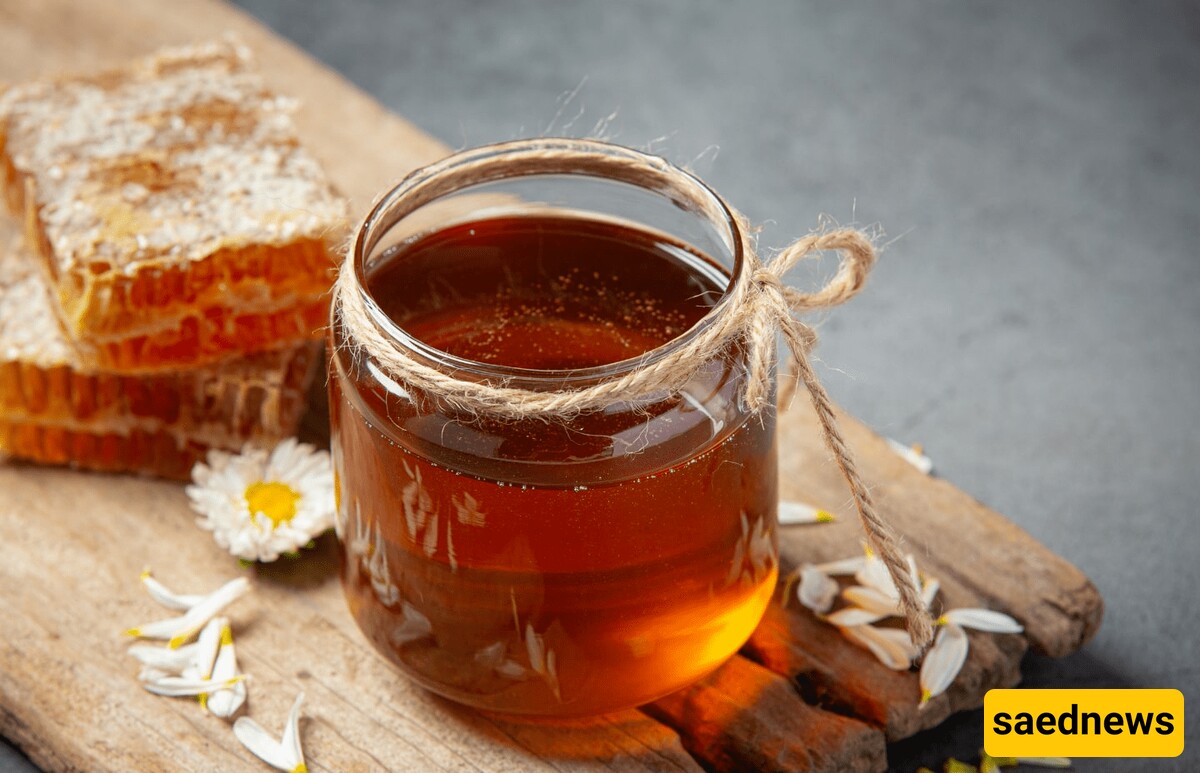SAEDNEWS: Honey is one of the rare foods that never spoils. Its exceptional longevity, rooted in its unique composition and the work of bees, makes it both a culinary and scientific marvel.

According to SAEDNEWS, honey has long been celebrated for lasting forever. Archaeologists have found jars of honey in Egyptian tombs that remain edible after thousands of years. This enduring quality is not a myth. It is the result of honey’s natural chemistry and the meticulous processes of bees. But what makes honey immune to spoilage? Let’s uncover the science behind this fascinating food.

Honey is hygroscopic, meaning it has very little water in its natural form. With less than 20% water content, it creates an environment unsuitable for bacteria and mold, which need moisture to grow.
Honey’s acidity, with a pH of 3.2 to 4.5, prevents the growth of microorganisms. This natural acidity is a key factor in its resistance to spoilage. Bees enhance honey’s preservation through an enzyme called glucose oxidase. This enzyme interacts with water in the honey to produce hydrogen peroxide, a natural antibacterial compound.
Bees collect nectar and transform it into honey using enzymes in their saliva. They then store the nectar in honeycomb cells and fan it with their wings to reduce its moisture content, giving it a thick, concentrated texture.
Once the honey is ready, bees seal the honeycomb cells with beeswax. This airtight seal protects it from exposure to air and moisture, preserving its quality indefinitely.

Honey’s longevity depends on how it’s stored. When kept in an airtight container at room temperature, it can last forever. Exposure to air or humidity, however, may lead to fermentation, altering its flavor and texture but not its edibility. Over time, honey may crystallize, forming sugar crystals. This is a natural process that doesn’t affect its quality. Gently warming crystallized honey restores it to its liquid state, making it usable again.
Honey found in 3,000-year-old Egyptian tombs remains a remarkable example of its durability. These ancient jars of honey were still edible, showcasing their extraordinary preservation. Honey’s preservative and healing properties have been recognized for centuries. Ancient cultures, including the Greeks and Romans, used honey to preserve food, treat wounds, and even embalm the dead.
Honey is a versatile ingredient, serving as a natural sweetener, a flavor enhancer, and a preservative in a wide variety of dishes, from desserts to sauces. Because of its antibacterial and antioxidant properties, honey is also a popular remedy for sore throats and coughs. Its nutrients and natural compounds contribute to overall health and immunity.
Pure honey does not spoil, but if it is diluted with water or stored in a humid environment, fermentation can occur, which causes it to sour. While honey is safe for adults, it should not be given to infants under 12 months old. It may contain Clostridium botulinum spores, which can lead to infant botulism, a rare but serious illness.
Honey’s resistance to spoilage is a testament to nature’s brilliance. Its unique combination of low water content, natural acidity, and protective enzymes creates a food that’s as durable as it is delicious. Celebrated for its health benefits, culinary versatility, and historical importance, honey stands as an enduring emblem of natural preservation and excellence.

